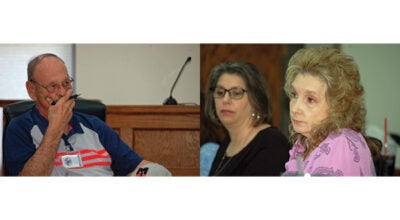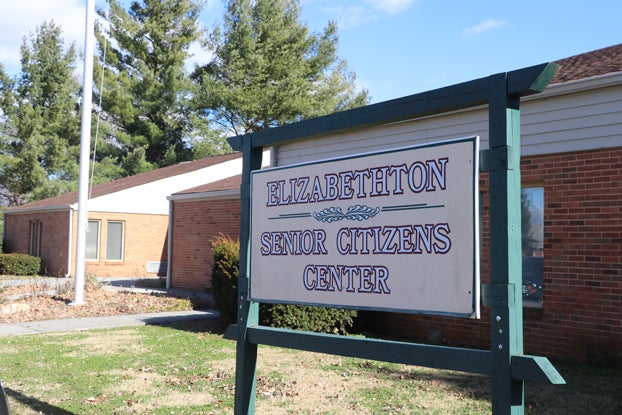Smoke-free living begins with one day
Published 9:49 am Thursday, November 20, 2014
The old adage says “quitters never win,” but the American Cancer Society is encouraging people to quit to win with the Great American Smokeout event Thursday.
This year’s theme for the annual event is “Quit Together. Win Together.”
The ACS marks the Great American Smokeout on the third Thursday of November by encouraging smokers to use the date either to stop smoking or as a day to make a plan to quit.
“The whole idea is for one day to really focus on a plan to quit,” Amy Hopson said. Hopson, Carter County community representative for the local branch of the American Cancer Society, said participants can either quit on that day or to use the day to help develop their quit plan.
“We just want people to think about it,” she said. “It is the perfect day to focus on quitting.”
By quitting, even for one day, the ACS said smokers can take an important step toward a healthier life.
Despite all the information available on the dangers of smoking, including warning labels on the packaging, Hopson said many people still choose to smoke.
“They know it’s damaging, but they continue to do it,” she said. “It is still the single largest cause of preventable disease in this country.”
According to the ACS, 42 million Americans still smoke cigarettes, 13.4 million smoke cigars and 2.3 million smoke tobacco in pipes.
The American Cancer Society has a smoking cessation program called Fresh Start, Hopson said. Tennessee also has a state program through the Department of Health to encourage smokers to stop.
Many of the smoking cessation programs get funding from the taxes placed on cigarettes, Hopson said. “A lot of people don’t understand that tax money goes to help fight the epidemic,” she said.
Smoking cessation programs and events like the Great American Smokeout help to encourage those who smoke to kick their addiction and begin to lead a healthier life, she said.
The annual Great American Smokeout events began in the 1970s, when smoking and secondhand smoke were commonplace across the nation. According to the ACS, the idea for the event grew from a 1970 event in Randolph, Mass., where Arthur P. Mullaney asked people to give up cigarettes for a day and donate the money they would have spent on cigarettes to a high school scholarship fund. Then, in 1974, Lynn R. Smith, editor of the Monticello Times newspaper in Minnesota, spearheaded the state’s first D-Day, or Don’t Smoke Day.
“The idea caught on, and on Nov. 18, 1976, the California Division of the American Cancer Society got nearly 1 million smokers to quit for the day,” the ACS history on the Great American Smokeout said. “The California event marked the first Great American Smokeout, and the Society took the program nationwide in 1977.”
“Since then, there have been dramatic changes in the way society views tobacco advertising and tobacco use,” the history said. “Many public places and work areas are now smoke-free — this protects nonsmokers and supports smokers who want to quit.”
The Smokeout events have continued each year, drawing attention not only to stopping smoking, but also to the deaths and chronic diseases caused by smoking.
Throughout the late 1980s and 1990s, many state and local governments began responding to the smoking epidemic by banning smoking in restaurants and workplaces, raising taxes on cigarettes, limiting cigarette promotions, discouraging teen cigarette use and taking further actions to counter smoking.
Some of the important dates in history of the campaign against smoking noted in the ACS history on the Smokeout events include:
• In 1977, Berkeley, Calif., became the first community to limit smoking in restaurants and other public places.
• In 1983, San Francisco, Calif., passed the first strong workplace smoking restrictions, including bans on smoking in private workplaces.
• In 1990, the federal smoking ban on all interstate buses and domestic flights of 6 hours or less took effect.
• In 1994, Mississippi filed the first of 24 state lawsuits seeking to recuperate millions of dollars from tobacco companies for smoking-related illnesses paid for by Medicaid.
• In 1999, the Department of Justice filed suit against cigarette manufacturers, charging the industry with defrauding the public by lying about the risks of smoking.
• In 1999, the Master Settlement Agreement was passed, requiring tobacco companies to pay $206 billion to 45 states by the year 2025 to cover Medicaid costs of treating smokers. The MSA agreement also closed the Tobacco Institute and ended cartoon advertising and tobacco billboards.
• In 2009, The Family Smoking Prevention and Tobacco Control Act was signed into law. It gives the FDA the authority to regulate the sale, manufacturing, and marketing of tobacco products and protects children from the tobacco industry’s marketing practices.
• In 2012, the FDA published a list of harmful and potentially harmful constituents in tobacco products and tobacco smoke. The list helps people better understand the amount of toxic, addictive, and cancer-causing substances in every puff of smoke.
The ACS said the strong stances taken by states and the federal government have shown great rewards in the effort to help people lead healthier lives.
“From 1965 to today, cigarette smoking among adults in the United States has decreased from more than 42 percent to around 18 percent,” the ACS said. “Strong smoke-free policies, media campaigns, and increases in the prices of tobacco products are at least partly credited for these decreases.”




